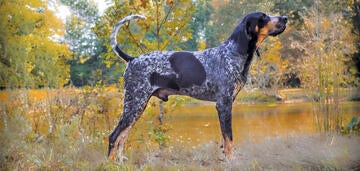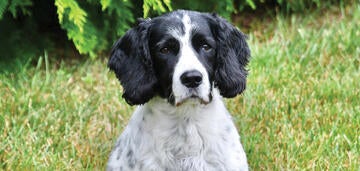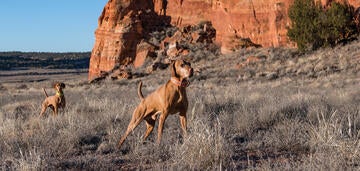Retriever Pro Rody Best Honored For Hurricane Rescue & Good Sportsmanship

Hurricane Harvey hit Houston hard. The catastrophic Category 4 hurricane ravaged the fourth largest city in the country, dumping up to 50 inches of rain in areas and causing $125 billion in damage. Harvey became Houston’s most destructive storm in history and the second costliest hurricane behind Katrina to strike the U.S. mainland.
The dismal forecast going into the weekend of Aug. 25, 2017, prompted professional retriever trainer Rody Best of Paige, Texas, two hours northwest of Houston, to cancel the snake proofing clinic planned for that Saturday at his training facility. About 100 retriever enthusiasts were coming to train their dogs to recognize the sight, smell and sound of snakes, a potentially life-saving skill when trialing or hunting.
At Best’s Monday morning staff meeting, he asked his six trainers and assistants, “Is there something we could do to help?”
With three flat-bottomed fishing boats among them, Best suggested, “We could take our boats down there and see if people need help.”
Hence, the idea to help rescue Hurricane Harvey victims was hatched. Two years later, Best was chosen to receive the 2019 Humanitarian Sportsman Recognition Award — the first one ever — from the AKC Master National Retriever Club (MNRC). Due to the COVID cancellation of the 2020 Master National, the award will be officially presented in October 2021 at the MNRC annual meeting held in conjunction with the Master National at County Valley, Idaho.
In the award announcement, the late Bill Teague, former MNRC president, said, “Rody epitomizes the very essence of the AKC code of sportsmanship. He and his team arrived in Houston before many first responders to help in the aftermath of Hurricane Harvey. In his sport, he helps out at every weekend hunting test he runs. He has mentored several trainers and offers his training grounds for hunting test events. Rody Best is a most befitting recipient of this inaugural Humanitarian Sportsman Award.”
After the rescue, Best started a GoFundMe account and raised $6,000 for retriever enthusiasts affected by the hurricane. “We sent out $1,000 to six people in the retriever community — judges, trainers, breeders — basically anyone in the retriever world who had losses from the flooding,” he says.
Looking back, Best says, “We had dogs that needed to be trained, but we knew their owners would be understanding of the situation.”
The pro trainer with 20-plus years’ experience and his training staff are well-known for turning out top-notch waterfowl and upland game hunters. Best Retrievers has produced an impressive 100 plus Master Hunters, 30 Hunting Retriever Champions, eight Master National Hall of Famers, 13 Grand Retriever Champions, seven Super Retriever Series Champions, and countless gundog hunting companions.
Later that day the Best Retrievers team began loading their boats on trailers and packing up for Houston. “We had no idea what we would get into or the magnitude of the flood,” says Best. “Before we left, we posted on Facebook that we were going to Houston and to please contact us if you or anyone you know needs help.”
A fellow trainer alerted the team about a boarding kennel in the Houston suburb of Cypress that was completely under water on its first floor. “They had moved the animals to the second floor but needed to get them out,” Best says. “We started making trips down a flooded access road hauling dogs and cats in our boats. Luckily, they had enough crates, and we made four trips transporting 30 animals.”
Night came and the weary rescuers stayed in their trucks parked on a pitch-black parking lot. “I couldn’t sleep,” Best says. “Our Facebook post had been shared over and over, and I had hundreds of texts and phone calls from people trapped and needing help. I felt helpless and desperate, not knowing how we could possibly help them all.”
The next day, the Best Retrievers team split up to help as many people as they could. Thousands were stranded, their homes and apartments flooded with 3 to 10 feet of water. Among the people Best transported was photographer Andrew Burton shooting for The Besides people, they joined others in boats as they collectively herded cattle, donkeys and deer to safety.
“After two days and three nights in Houston, people and boats were pouring in from everywhere to help,” Best says. “I could tell we had done our part, and it was time to head home.”
Exhausted emotionally and physically, Best reflected on the experience on the drive home. “I felt extremely grateful to have been able to do what we could,” he says. “We saw that people needed help and thought we could maybe do something. I did not realize at the time, it would change my life forever.”









